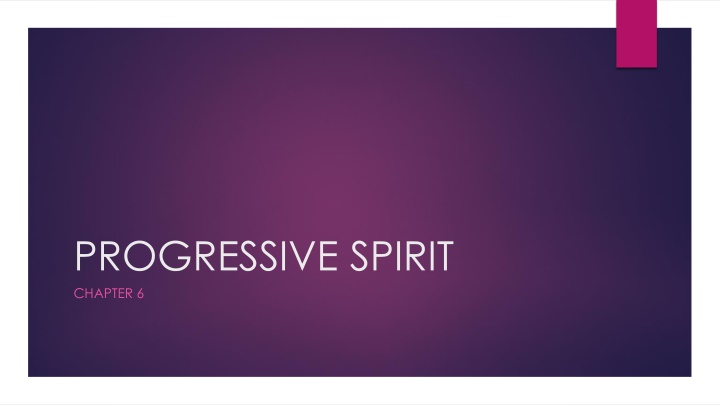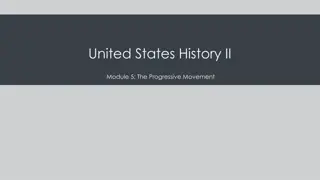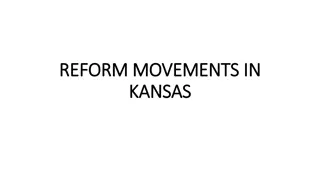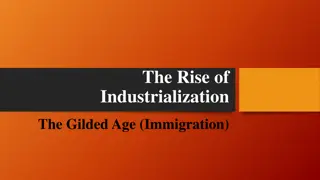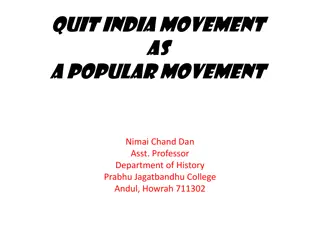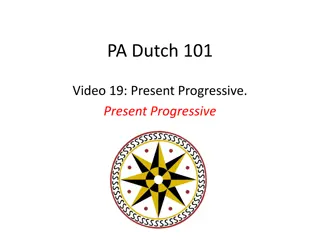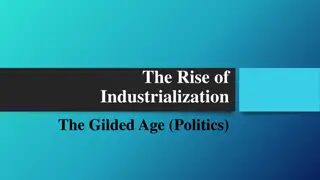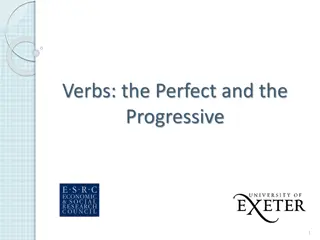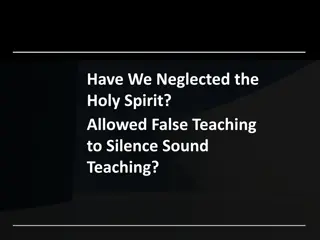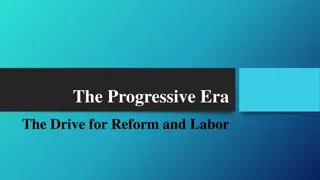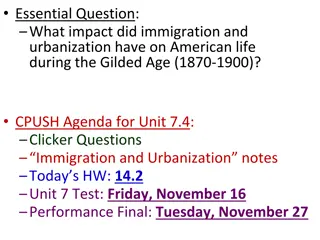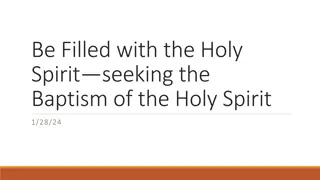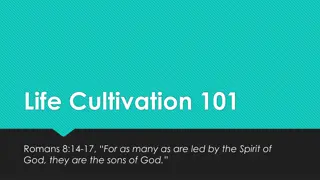Progressive Spirit - Chapter 6: Gilded Age & Progressive Movement
Explore the era of political corruption in the late 1800s known as the Gilded Age, where issues like inequality, political machines, and scandals plagued the government. Dive into the efforts of Progressives who sought reforms to address social problems such as crime, disease, and poverty, ultimately aiming to improve society through initiatives like expanding voting rights and advocating for better working conditions.
Download Presentation

Please find below an Image/Link to download the presentation.
The content on the website is provided AS IS for your information and personal use only. It may not be sold, licensed, or shared on other websites without obtaining consent from the author.If you encounter any issues during the download, it is possible that the publisher has removed the file from their server.
You are allowed to download the files provided on this website for personal or commercial use, subject to the condition that they are used lawfully. All files are the property of their respective owners.
The content on the website is provided AS IS for your information and personal use only. It may not be sold, licensed, or shared on other websites without obtaining consent from the author.
E N D
Presentation Transcript
PROGRESSIVE SPIRIT CHAPTER 6
6.1 Gilded Age & Progressive Movement Timeline: 1868-1920 Key Terms: political machines, Progressives, muckrakers, 17thAmendment, recall, initiative, referendum, Robert M LaFollette Main Ideas: Political corruption was common during the Gilded Age. Progressives pushed for reforms to improve living conditions. Progressive reforms expanded the voting power of citizens.
Political Corruption Gilded Age = late 1800s due to a book describing inequality between rich and poor Many people believed government had the responsibility of fixing inequality Political machines- powerful organizations used both legal & illegal methods to influence someone elected to office- controlled govt Political machine bosses often drew support from immigrants by providing services or jobs for a vote NY Tammany Hall boss, William Marcy Tweed stole $200M from city
Clean Up! Many American s questioned the honesty of the federal (US) govt due to several scandals Newly elected officials gave jobs to supporters-many unqualified and untrained = unfair! Gilded Age Presidents (see p. 168) pushed for reform and made minor adjustments-eased people s minds but laws were not actually enforced Progressives- people working to improve society in the late 1800s tried to solve problems of industrial and urban growth Goals: eliminate cause of problems such as crime, disease, and poverty- encouraged education and better working conditions
Muckrakers at Work Muckraker-journalist/writers that exposed the muck/filth of society Wrote about child labor, racial discrimination, slum houses, and corruption in business/politics Upton Sinclair-famous muckraker-wrote book called The Jungle describing unsanitary practices in meat processing factories See p. 172-173 These stories united Progressives and influenced voters
Successful Reforms City planners and engineers addressed several issues: safer building codes, new public parks, paving streets, building bridges, decreased pollution, created waste disposal, purified water sources, etc Focus on education: laws requiring children to attend school, kindergarten programs created, increased problem solving skills FIRST American kindergarten in St Louis- opened by Susan Blow Joseph McCormack led the American Medical Association supporting laws to protect health
Voting Reforms Under the pressure from reformers, secret ballot voting was established 17thAmendment- allows Americans to vote directly for US Senators Primary was established to pick a candidate to run for office Officials could be recalled/removed from office if majority ruled Voters could petition to start an initiative for new laws Referendums permitted voters to approve or reject a law that More power was given to the voters!
Government Reforms Progressives attempted to change the way govt worked City councils were created and elected by citizens of the city Robert M LaFollette (Wisconsin s Governor) led effort to reform/change state govt by decreasing political machines LaFollette used university professors to write new laws and made information available to the public (called Wisconsin Idea) Voters could now know if leaders had kept campaign promises This became the model for other states See p. 170
6.2 Reforming the Workplace Key Terms: Triangle Shirtwaist Fire, workers compensation laws, capitalism, socialism, William Big Bill Haywood, Industrial Workers of the World Main Ideas: Reformers attempted to improve conditions for child laborers. Unions and reformers took steps to improve safety in the workplace and to limit working hours.
Improving Childrens Conditions Boys-shine shoes, sell newspapers Girls-cooked, cleaned, sewed $0.40/day Other jobs were in the factory, mill, or mine National Consumers League worked to influence legislatures Despite some laws, parents ignored the law to increase family income, kids lied about age See p. 176
Workplace Safety Progressives wanted to improve workers safety, limit working hours, and protect workers rights 1911 Triangle Shirtwaist Company in NY employed immigrants-fire on the 8thfloor-workers were locked in to reduce theft and no one could escape- 146 worker died Workers compensation laws guarantee a portion of lost wages to workers injured on the job- FIRST one passed in Maryland in 1902
Courts and Labor Many business leaders thought govt regulations did not apply to work so they went to court 1905 NY lawsuit by baker, Joseph Lochner challenged a law limiting bakers hours to 10 per day He won declaring states could not restrict employment agreements (Lochner v New York) 1908 women s work hours were limited to protect their health (Muller v Oregon)
Labor Organizations Strong force for improving working conditions Membership increased significantly Samuel Gompers, leader of American Federation of Labor supported capitalism-economic system in which private businesses run most industries and competition determines the price of goods (supply & demand) Eugene V Debs believed in socialism-economic system in which the government owns and operates a country s production Industrial Workers of the World lead by William Big Bill Haywood was a group to overthrow capitalism by staging strikes-aggressiveness caused its decline
6.3 Rights of Women & Minorities Key Terms: 18thAmendment, National American Woman Suffrage Association, Alice Paul, 19thAmendment, Booker T Washington, Ida B Wells, W.E.B. DuBois, NAACP Main Ideas: Women fought for temperance and the right to vote. African American reformers challenged discrimination and called for equality. Progressive reforms failed to benefit all minorities.
Women Fight Women graduated college with social work and teaching degrees Few studied law or medicine Many joined clubs active in reforming - Goals were temperance, women s suffrage, child welfare, and political reform/laws Women s suffrage refers to women s right to vote Social problems increased and many people blamed alcohol Woman s Christian Temperance Union was one club that fought to restrict the sale, transportation, and consumption of alcohol 18th Amendment: banned production, sale, and transportation of alcohol in the U.S.
Womens Right to Vote Susan B Anthony & Elizabeth Cady Stanton founded the National American Woman Suffrage Association to promote the cause of suffrage Alice Paul founded National Women s Party to also promote suffrage. However, Paul used parades, demonstrations, picketing, hunger strikes, and other negative ways to gain attention Many feared if women gained the right to vote, they would support minimum wage and child labor laws 19th Amendment: (1919) granted American women the right to vote
Others challenge discrimination Booker T Washington encouraged African American equality W.E.B. DuBois founded the NAACP (National Association for the Advancement of Colored People). Ida Wells- drew national attention on lynchings Grandfather clause (law) stated that if a man s grandfather voted, they could vote. Many white men were allowed to vote but few African Americans were allowed. NAACP vs. U.S. - court case won by the NAACP making the grandfather clause illegal - brought attention to racial inequality Native Americans plus Chinese and Mexican immigrants had few successes at reform and equality
6.4 Progressive Presidents Key Terms & People: Theodore Roosevelt, Pure Food and Drug Act, conservation, William Howard Taft, Progressive Party, Woodrow Wilson, 16th Amendment Main Ideas: Pres. T. Roosevelt progressive reforms tried to balance the interests of business, consumers, and laborers. Pres. Taft angered Progressives with his cautious reforms. Pres. Wilson enacted far-reaching banking and antitrust reforms.
Roosevelts Reforms After Pres. McKinley s assassination, Theodore Roosevelt (VP) became Pres. Square Deal program supported business people, laborers and consumers by regulating big businesses Sherman AntiTrust Act - broke up monopolies in 1890 Pure Food and Drug Act - prohibited contaminated food in 1906 1st Pres. to conserve our environment by creating national parks Yellowstone National Park was 1st national park in 1872 (58 parks today)
Taft Reforms Roosevelt supported Taft as the next president due to him also favoring business regulation and opposing socialism. But they differed on limiting presidential power. Taft chose to move cautiously toward reform which angered progressives. Passed weak laws on tariffs Roosevelt formed Progressive Party and ran for Pres again but Republicans were split between him and Taft. So Democrat Wilson was elected
Wilsons Reforms Reform was top priority to help working class Americans Passed strong laws on tariffs Created Federal Reserve Act (1913) to regulate America s economy Introduced modern day income tax with 16th Amendment-states citizen s incomes can be taxed Created Federal Trade Commission to investigate and punish unfair trade practices in America Progressives loved Wilson and re-elected him as President Chart p. 189
TEST TIME Review vocab and people Turn main ideas into test questions Complete, check, and study the chapter review p. 191 Practice Quizlet Good Luck!
